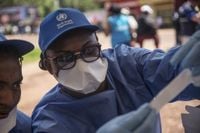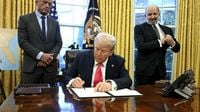On September 4, 2025, the Ministry of Health in the Democratic Republic of the Congo (DRC) officially declared a new Ebola outbreak in the remote Bulape health zone of Kasaï province. This marks the 16th time Ebola has struck the DRC since the virus was first identified there in 1976, according to Médecins Sans Frontières (MSF) and the World Health Organization (WHO). The outbreak is already proving deadly and challenging to contain, with at least 38 confirmed cases and 31 deaths reported as of September 18, 2025, the WHO said.
The epidemic’s start was both tragic and emblematic of the risks facing healthcare workers. A pregnant woman arrived at Bulape General Reference Hospital on August 20, displaying hallmark symptoms: high fever, bloody diarrhea, and severe weakness. She died five days later from multiple organ failure. Two healthcare workers who treated her soon developed similar symptoms and also died. By September 19, more than 20 confirmed cases and 16 deaths had been reported, including several healthcare workers among the victims, MSF confirmed.
Responding to the crisis, MSF and WHO rapidly mobilized. “Our teams began supporting the General Referral hospital in Bulape almost immediately,” said Brice de le Vingne, MSF’s emergency coordinator. An Ebola treatment center was set up within the hospital compound, opening its doors to patients on September 9. This rapid response was crucial, but the challenges were—and remain—immense. The outbreak zone is among the most isolated in Congo, with poor roads, no cargo airport, and only sporadic electricity. These conditions have hampered emergency efforts and complicated the delivery of medical supplies and vaccines.
Population movements between Bulape and the provincial capital, Tshikapa—located 100 to 200 kilometers away—have heightened concerns that the virus could spread to larger urban areas. The region last experienced an Ebola outbreak in 2007, and the memory of that crisis still lingers among residents and healthcare workers alike.
Laboratory testing has revealed that this outbreak is a new zoonotic spillover event, unrelated to previous Ebola outbreaks in the area. The culprit is the Zaire strain of Ebola, the same strain responsible for the devastating West Africa epidemic of 2014-2016. Ebola is a severe, often fatal illness that affects humans and nonhuman primates. It is caused by a group of viruses, and spreads through direct contact with the bodily fluids of infected individuals or contaminated objects. The virus is not airborne, but its transmission through blood, urine, feces, saliva, semen, and other secretions makes it highly contagious in healthcare and caregiving settings, the Centers for Disease Control and Prevention (CDC) explained.
“This outbreak is a reminder of the threat posed by Ebola in the DRC,” said Hilde De Clerck, MSF infectious diseases specialist. “Fortunately, progress in recent years has led to improved treatments, but this haemorrhagic fever can still be fatal for most infected patients without timely and appropriate care.”
The symptoms of Ebola typically appear suddenly, with an incubation period ranging from two to 21 days after exposure. Most people become ill within eight to ten days. Common signs include fever, headache, muscle and joint pain, weakness, fatigue, sore throat, loss of appetite, diarrhea, vomiting, stomach pain, and unexplained bleeding or bruising. In severe cases, the disease can progress rapidly to organ failure, shock, and death. Without early diagnosis and treatment, Ebola can have a case fatality rate as high as 80 to 90%, the CDC noted.
The international response has included the deployment of 2,000 doses of the Ervebo vaccine by WHO, with additional shipments expected. The vaccine is being administered using a “ring vaccination” strategy, targeting contacts of confirmed cases and frontline healthcare workers most at risk. Early detection, isolation of cases, and comprehensive contact tracing remain the best tools for containing the virus before it can establish wider transmission chains.
This outbreak comes at a difficult time for the DRC, which is simultaneously battling other health emergencies, including mpox, cholera, and measles. The country’s limited healthcare resources are stretched thin, and the remoteness of the outbreak area only compounds the challenge. The WHO currently assesses the public health risk as high at the national level, moderate regionally, and low globally, reflecting both the outbreak’s current geographic containment and the effectiveness of established response protocols when rapidly implemented.
In the United States, the CDC issued a Health Alert Network Health Advisory on September 18, 2025, to raise awareness of the outbreak. The advisory emphasized that, as of that date, no suspected, probable, or confirmed Ebola cases related to this outbreak had been reported outside the DRC, including in the United States. The risk of spread to the U.S. is considered low due to the lack of direct flights from the outbreak region and the difficulty of accessing the area. However, the CDC cautioned that travelers from affected areas in the DRC could potentially enter the U.S. via connecting flights. The agency recommends that travelers avoid contact with ill people and monitor themselves for symptoms for up to 21 days after leaving the area.
U.S. public health officials are on alert, particularly in states like Florida, where the Department of Health has protocols in place for rapid isolation and contact tracing should a suspected case be identified. “Through this collaboration with our health care partners, we ensure that EVD testing is made available when needed. If EVD infection is confirmed, the Florida Department of Health will ensure contacts are closely monitored for symptoms of illness and take appropriate actions to prevent further spread of EVD,” the department stated.
Yet, concerns have been raised about the federal response in Washington. According to NOTUS, current and former U.S. infectious disease officials have criticized the Trump administration for a lack of coordination and leadership. The White House Office of Pandemic Preparedness and Response Policy (OPPR) and the National Security Council’s biosecurity staff were largely cut earlier this year, with the OPPR leader resigning in July and no replacement named. Normally, these bodies would lead the federal response to outbreaks like this one. “It’s just the level of structure and organization to them don’t appear to be there,” said John Lowe, co-lead of the National Emerging Special Pathogens Training and Education Center.
A senior Trump administration official told NOTUS, “The U.S. government is working with the Government of the DRC to rapidly contain the virus to keep Americans safe, both at home and abroad. U.S. government staff are working side by side with public health officials from the DRC in their emergency operations center.” However, the official did not specify who in the White House or federal government is currently leading the response, nor what specific actions are being taken.
The CDC’s travel notice for the DRC, issued earlier this month, recommends that travelers practice usual precautions and monitor for symptoms before traveling. The U.S. State Department has also issued a Level 3 travel advisory for the DRC, urging Americans to reconsider travel due to crime, civil unrest, and armed conflict.
While the likelihood of the outbreak spreading to the U.S. remains low, experts warn that gaps in coordination and preparedness could pose risks if the situation changes. “Do I think this Ebola outbreak in a very remote area of DRC is going to be the one that imperils the United States? I think it’s a low likelihood,” said Jennifer Nuzzo, director of the Pandemic Center at the Brown University School of Public Health. “Does the fact that the actions that we usually take are not happening a glaring warning sign for how we would be able to respond to future bio threats? Absolutely.”
As medical teams in Congo race to contain the outbreak, the world is once again reminded of the persistent threat posed by Ebola—and the critical importance of swift, coordinated, and well-resourced public health responses.

